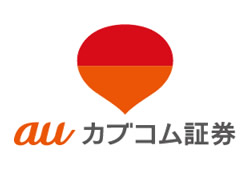The story behind the rise in Guaranteed Bandwidth with Internet in Japan
- Call us
- +81-3-5209-2222
Japan's telecommunications infrastructure is overall stable and the number of outages are low. Although you can access to the Internet at a certain level of quality even on a Broadband circuit, Guaranteed Bandwidth circuits are recently selected. Here you can find the reasons behind the trend.
High interest in Internet with a Guaranteed Bandwidth type connection, especially among foreign-owned companies
- 1) What’s the difference between a guaranteed circuit and a broadband type circuit?
- The Guaranteed Bandwidth service, as its name implies, is a circuit that guarantees a certain specified amount of bandwidth. If a contract was signed for 1Gbps, a Guaranteed Bandwidth connection is a service system that guarantees both upstream and downstream speeds of 1Gbps, exactly as stated on the contract.
- It comes with a premium price, but it is used for important products and networks that want to maintain a stable communication environment and speed at all times. This system has spread into general use in Europe and the United States.

- In contrast, the broadband service does not guarantee 1Gbps even if the communication speed was contracted as such; at best, it is a model that “provides services within the range of 1Gbps”. As a result, it is rare to get the contracted maximum speed.
To its merit, broadband easy to introduce, affordable, and is the system that is commonly used in Japan. Inquire about our Guarantee-type Internet that never drops or disconnects
- 2) Why is broadband the mainstream in Japan, and what historical background is there?
- In Japan, it can be said that connecting to the Internet using telephone lines installed in homes and businesses is one of the reasons that led to the spread of the broadband type.
- In the initial stages, dial-up connection using an analog telephone line appeared in the late 1990's- the “bleep” “bleep” of the connecting modem is a nostalgic memory for many people.
- After that, ISDN played a leading role in Japan from the late 1990s to the early 2000s. In addition to the explosive spread of the Internet, due to the convenience of being able to connect to the Internet while making a phone call, the Telephone and Internet lines for homes and businesses went from analog telephone lines to ISDN lines.
- Of course, there was also Guarantee-type Internet connection service throughout this time. In urban areas, connection services using dedicated lines instead of telephone lines were provided, but due to the high price, only some companies could use them.
- ADSL then followed, appearing in the early 2000s. This was a standard that used an old analog telephone line instead of ISDN, but this time, since the Internet communication speed had suddenly increased from several tens of Kbps to several tens of Mbps, the word “broadband” came into use. From around this time, video streaming and Internet gaming began to take off.

- However, ADSL was not widely used for a long time because it had many disadvantages, such as low speed in areas far from the telephone exchange and asymmetrical communication speeds between upstream and downstream.
Shortly after the advent of ADSL, the fiber optic line emerged. - With coverage areas receiving stable speeds of 100Mbps or 1Gbps for both upstream and downstream, corporate Internet lines were rapidly switching to fiber optic. Then, as the new prices became affordable, the Internet line in households also changed to fiber optic. Nowadays, even telephones are available as an option when installing fiber optic.
- Although technology and services changed over time, as a result of pursuing the simplicity of easily connecting to the Internet using a telephone line, convenience was valued over reliability, and "broadband" became the main system.
- 3) Advantages and disadvantages of using “broadband” in businesses
- In Japan, major telecommunications carriers invest a huge amount of money to develop a high-quality optical communication network. In addition, there are some benefits to “broadband” such as underground cabling and a stable power supply, so even if it is “broadband”, there are almost no extended periods of service interruption due to power outages.

- If you are using applications which don’t require a fast connection speed, or you use your connection for simple work tasks, a low-priced “broadband ” circuit is enough. In addition, because of its low cost, a “broadband” circuit may be suitable for use as a backup line for the main Guaranteed Bandwidth circuit.
- On the other hand, broadband is not suitable for stable speeds above a certain level. Besides, even if outages are infrequent, there may not be a guarantee as to how long it will take to recover if an outage does occur.
Therefore, broadband is not suitable for tasks and applications where traffic drops would be a problem.
- 4) Why a Guaranteed Bandwidth circuit now?
- So, why is guarantee-type so popular in Japan now?
- The major factor is that the importance of using the Internet in companies has grown so large that it cannot be overlooked.
- Since businesses are operated on the premise that they are always comfortably connected to the Internet for browsing web, emails, using the Office365 cloud service and remote work, the disadvantages of broadband have once again come to be recognized as a risk.
- Also, it has become possible to choose Guaranteed Bandwidth lines that guarantee the speed and the time it takes for the guaranteed line to recover in the event of an issue.
Inquire about a secure Guaranteed Bandwidth Internet connection for your cloud needs
- Also, it is easy for foreign companies, where a guaranteed-type is standard, to look unfavorably on Japanese corporations using a broadband connection. As a result, it is not unheard of for the head office to direct them to switch to guaranteed-type.
- 5) Unitas Global's Dedicated Internet access "Guaranteed Bandwidth"
- Guaranteed Bandwidth
Unitas Global's Dedicated Internet access (DIA) provides a Guaranteed Internet bandwidth between the range of 3Mbs and 10Gbps. If you purchase a 200Mbps service, you will always receive 200Mbps for both upload and download regardless of the time or day. - Ethernet access lines
Unitas Global's Dedicated Internet access (DIA) will be delivered to your premises nationwide through dedicated Ethernet access lines. This means that you will not need to set up PPoE or IPoE but just set up an IP connection between your router and Unitas Global's router. This is ideal for global companies that want the same configuration for their headquarters or other global locations. - Network performance
Unitas Global's route optimizing technology makes a daily average of 1.1 million optimizations per Point of Presence. It automatically puts your outbound traffic on the best performing route. This means that once you’re plugged into the Unitas Global network, you don’t have to do anything to see the difference. And with the meshed infrastructure of Tier 1 ISPs and our global network, you never have to choose between reliability, connectivity or speed. - Service Level Guarantees (SLA)
Proactive monitoring, alerting and crediting for network issues.
An industry-leading SLA that supports:
100% network availability
Less than 150ms latency between Japan and the US
Less than 325ms latency between Japan and Europe
Under 1% of packet loss between Japan and the US, and between Japan and Europe - 24/7 English and Japanese support
Unitas Global provides technical support 24 hours a day, 365 days a year in both English and Japanese. This means that both your local staff in Japan and your IT manager overseas can contact us anytime and receive support.
Unitas MIRO Donuts Net (Internet Connectivity)



